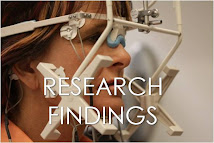Data to be Gathered:
- Occlusal Signs Exam Form - Symptomatic Patient (Note the Chief Complaint)
- Scan 9 (Pre TENS)
- Scan 18 (Pre TENS) - Display 4 boxes
- Spectral Frequency Analysis (Graph)
- Frontal Profile Photo of Patient
- Cheek retracted view - Frontal CO
EMG patterns of symptomatic patients often come into question as to their meaning and interpretation. Baseline EMG parameters of the symptomatic patient needs to be studied to further qualify the meanings and interpretation of muscle pathology before diagnostic conclusions can be made as to the EMG pattern relevance to overall structural skelatal patterns.
We are testing a predefined group of patients who have “Signs and Symptoms" as per the Myotronics K7 software Occlusal Sign Exam Form parameters – boxes are checked off in this section indicating the presence of symptoms to define the "Symptomatic" group in this particular study.
We realize Symptomatic has a deeper definition than the patients subjective perspective and the doctors perspective who will use his/her insightful experience, trained eye, objective/subjective clinical judgment and measured tests to determine a level of symptomology.
We have already established that “asymptomatic” can be a very subjective thing. For the purposes of the previous K7 Project No. 1 study. Working in the real world, we have decided to use identifiable patients who report SYMPTOMS to help us understand and interpret EMG recording norms. This study would like to identify the signs with the experienced symptoms.
We believe that the chance of finding patient's with signs and symptoms is high. We believe that most patients have various forms of signs and my not have subjective symptoms. We are interested in those patients who report symptoms to help define the EMG resting patterns as well as the sustained 10 second clench patterns.
HYPOTHESIS:
Among a growing group of clinicians implementing K7 data gathering protocols there is common and well known assumptions about scan 9 and scan 18 as to their interpretation and meaning. This is the reason to further a study to further compare and define baseline parameters with the previous Asymptomatic K7 Project No. 1 study data to analyze and compare EMG patterns and trends between the asymptomatic and the symptomatic. This will give insight as to whether there is validity in EMG interpretation of ascending or descending patterns based on mean spectral frequency analysis techniques between the two studies. Objective tests and research must be done to prove the "degree of confidence" to confirm such claims.
NULL HYPOTHESIS: No statistical difference between asymptomatic vs symptomatic patients exists.
Question(s): Are the findings between Study No. 1 and Study No. 2 to statistically validate conclusions regarding that Scan 18 and its significance. Clinical relevance to the clinician's diagnostic and treatment decision making using such test is in question? If there is a degree of confidence in these findings, then Scan 18 as is presently advocated may be determined clinically relevant. If no degree of confidence is found, then there may be no clinical relevance to such claims. Protocols and parameters are being established through these studies to help establish scan 18 diagnostic interpretation can be made.
NOTE: This study at this time is purposely not following the classical Scan 18 protocol (Base line scan 18 first, followed by 45-60 minutes of ULF TENS then a second Scan 18 post TENS to evaluate the mean frequency analysis graph.



No comments:
Post a Comment